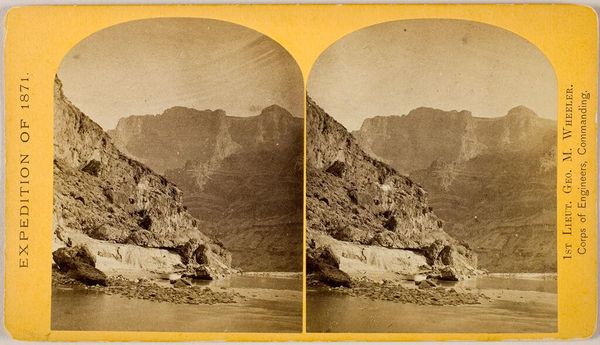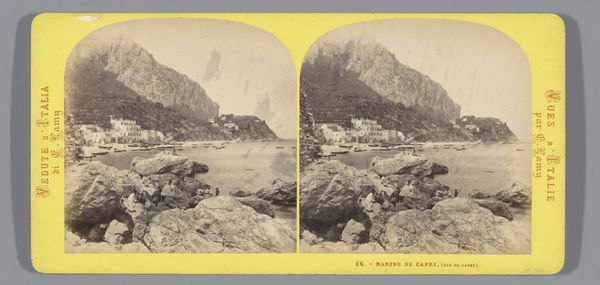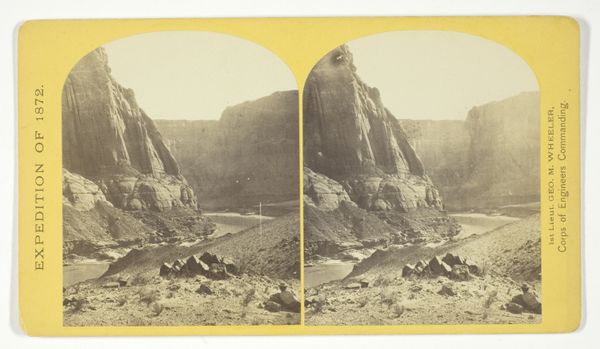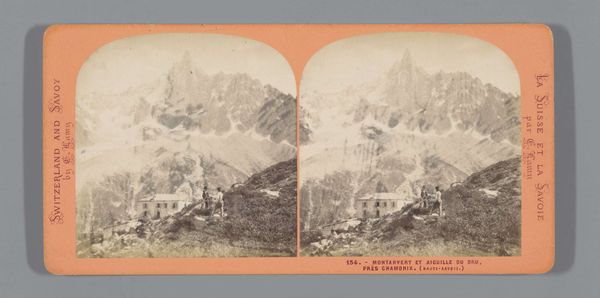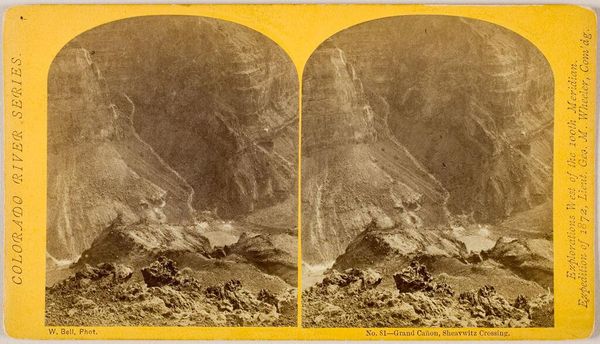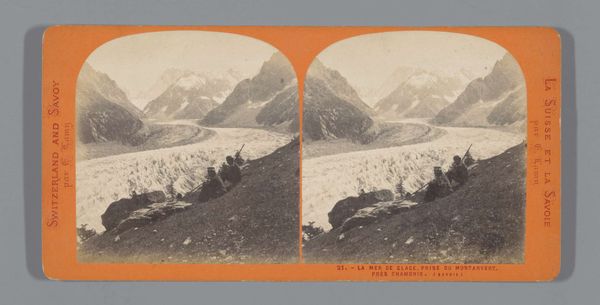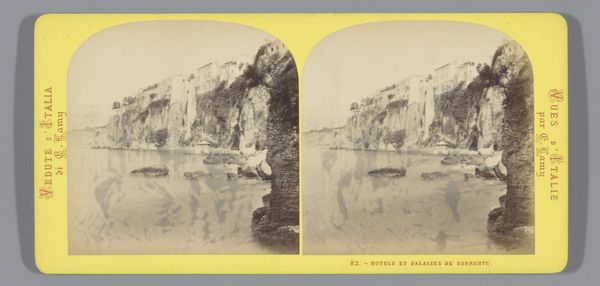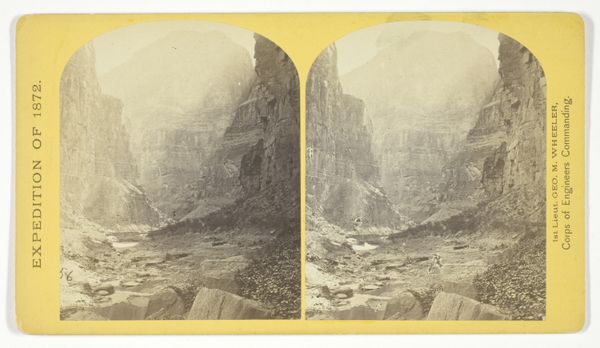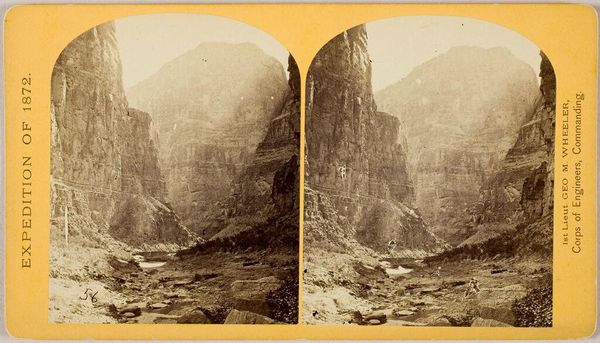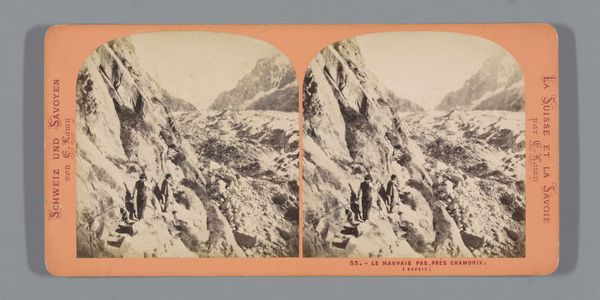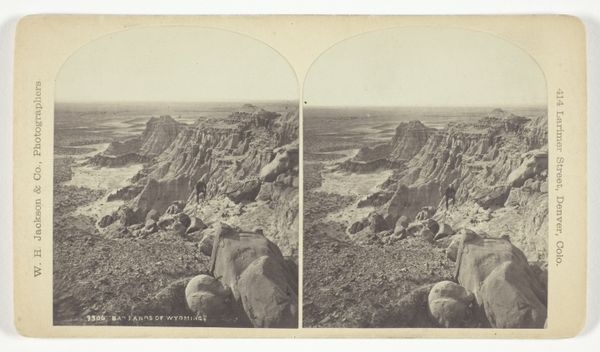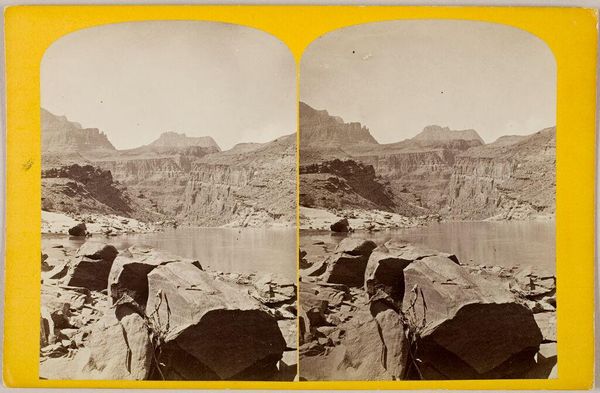
Dimensions: height 87 mm, width 178 mm
Copyright: Rijks Museum: Open Domain
Editor: This is a print from 1861-1878 by Ernest Eléonor Pierre Lamy, titled "Kust van Sorrento"—or "Coast of Sorrento." It has this dreamlike quality to it, like looking at a scene from the past, preserved in amber. How do you interpret this work? Curator: The stillness of the scene is striking. Note the architectural structures atop the cliffs, juxtaposed with the weathered rocks in the foreground, as if humanity is building upon nature's solid foundation, a kind of eternal dialogue. It speaks to our innate drive to construct, to leave a mark, against the grand theater of nature’s timelessness. Editor: That tension between nature and humanity is so interesting here, almost oppositional. What can that dialogue tell us? Curator: The image invokes memory and the cultural weight we place on such locations. Places like Sorrento carry an echo of history, of romantic pilgrimages. How do we hold such spaces within ourselves? This image freezes a moment when those longings intersected in the collective mind. Lamy doesn’t simply depict a coast; he conjures an entire history of longing, expectation, and the allure of distant lands. It asks the viewer, "What meaning do *you* bring to this landscape?" Editor: I’m realizing how many layers can be packed into a seemingly simple image. It’s not just a place, but a repository for all sorts of feelings and experiences. Curator: Exactly! And through symbols, like architecture on a cliff, or even the lone figure standing there, the image communicates across time. What stays with us, evolves? It's visual encoding, like cultural DNA. Editor: I never thought of an image in that way before—as cultural DNA. Thank you! Curator: My pleasure! There’s always more to discover when we view art as a layered symbol, not merely a scene.
Comments
No comments
Be the first to comment and join the conversation on the ultimate creative platform.
